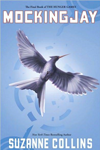
Search
Categories
Famous Authors
Top Selling Books

Book Home ![]() Books Information
Books Information ![]() The King in Yellow
The King in Yellow
The King in Yellow
The King in Yellow by Robert W. Chambers is a 1895 collection of short horror stories loosely connected by their shared references to a fictional play of the same title. The significance of the color yellow is either from its use to indicate quarantine or from the feudal reservation of the color fauvel for those who were incapacitated by fear. Yellow also signified decadence and aestheticism at the turn of the 19th Century, as in the Yellow Book, a literary journal associated with Oscar Wilde and Aubrey Beardsley.
The stories are macabre in tone; the central characters are, more often than not, decadents and artists; Paris is the most frequent setting. The characters in the book who read the play The King in Yellow go mad or meet horrible dooms; as if to protect his own readers, Chambers quotes only the briefest passages of the play.
After H. P. Lovecraft read the book in 1926, he incorporated it into the Cthulhu Mythos through "The Whisperer in Darkness", one of the seminal Mythos stories. August Derleth further developed this connection and tied the King in Yellow to Hastur. In later Mythos materials, the King is an avatar of Hastur, so named from his appearance as a thin, floating man covered in tattered yellow robes.
The book is cited by some as influencing Lovecraft to create his own fictional dangerous texts like the Necronomicon, although it is now believed that Lovecraft did not actually read Chambers until 1927.
As to the play itself, there have been several attempts to write the full text of the play. Writers who have presented their own versions of it have included James Blish and Lin Carter. Karl Edward Wagner used it as a motif in his novella The River of Night's Dreaming.
More recently, Lawrence Watt-Evans adopted the name for a villainous character in a series of novels (The Lure of the Basilisk, The Seven Altars of Dusarra, The Sword of Bheleu, and The Book of Silence, collectively known as The Lords of Dus).